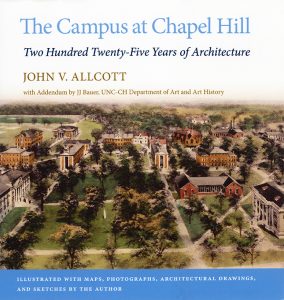JJ Bauer
Visual Resources Curator
Teaching Assistant Professor
Adjunct Faculty in the School of Information and Library Science
JJ Bauer received her training at Southern Methodist University, University College-London, Penn State University, and the University of North Carolina at Chapel Hill. Her interests include: almost all culture from 1895-1919 in America and Europe, but especially design, architecture, and film; gender; theater; and digital humanities. She co-curated with Timothy Riggs the Ackland Art Museum exhibition Apocalypse Then: Images of Destruction, Prophecy and Judgment from Dürer to the Twentieth Century (2000). An addendum chapter to a new edition of John V. Allcott’s The Campus at Chapel Hill: Two Hundred Years of Architecture (2019) is now available (read more here: 225 Years of Architecture). She continues to work on the Artists’ Studio Archives Project. She is an advisor for students pursuing a dual degree Masters in Art History-Masters in Library Science/Information Science.
JJ conducts “The Campus at Chapel Hill” Architecture Tours through Heart of the Hill Tours.
Courses
ARTH 156: Introduction to Architecture
This course will examine the history of architecture from prehistory to the present. It is introductory and assumes no background in architecture or architectural history. It seeks to provide students with an introduction to three basic foundations for studying architecture: 1) a set of conceptual and visual tools for analyzing buildings and architectural images in general; 2) a critical overview of issues and problems faced by architects; 3) a historical sense of the major periods and developments in cultural and social history that directly impacted architecture. Through textbook readings, lectures, and discussions, students should be able to look at the buildings all around them in a new, historical light and begin to recognize the major movements and building types within architecture; learn how to decipher the vocabulary architects use to communicate cultural norms of behavior and personal preferences; understand architecture as a vital expression of human values and cultural behavioral systems; and become aware of the various historical, social, cultural, technological, and philosophical influences on architectural design. Students should also become more aware of the material, technological and visual qualities of architecture in general, while also learning how to translate observation and knowledge into persuasive verbal analysis.
ARTH 159: The Film Experience
Since the invention of cinema, our culture has come to be dominated by visual media. Our values, opinions, and beliefs (as well as those of other peoples and cultures) are increasingly defined by visual narratives, among which film is so far the most sophisticated and powerful example. Yet we very often do not think about understanding and writing about films in the same way as we treat the other arts.
The purpose of this course is to introduce students to the language of visual media and to critical tools for discussing and writing about film as an art form. Understanding how films function aesthetically, and how they are meaningful for their audiences, is also meant to enlarge your appreciation and enjoyment of more and different kinds of films. This course encourages students to be more critically aware in evaluating how visual media contribute to defining our society, for better or worse.
The primary goal of this class is to introduce you to the study of film with a focus on developing critical and formal analytical skills. Through screenings of a broad range of films, the class examines the primary visual conventions by which motion pictures create and comment upon significant social and aesthetic experience. Production design/art direction, costume/makeup design, cinematography, lighting, editing, special effects, and strong directorial visual styles will be discussed as components of cinematic style and meaning.
ARTH 383: Modern Architecture
This course will examine the history of architecture from the late nineteenth century to the present. It is introductory and assumes no background in architecture or architectural history. It seeks to provide students with an introduction to three basic foundations for studying Modern architecture: 1) a set of conceptual and visual tools for analyzing buildings and architectural images in general; 2) a critical overview of issues and problems faced by architects in the last century; 3) a historical sense of the major periods and developments in cultural and social history that directly impacted modern architecture. Through textbook readings, lectures, and discussions, students should be able to look at the buildings all around them in a new, historical light and begin to recognize the major movements and building types within modern architecture. Students should also become more aware of the material and visual qualities of architecture in general, while also learning how to translate observation and knowledge into persuasive verbal analysis. In addition, students will be expected to begin to develop research skills through an original investigation into a particular aspect of modern architecture.
A Google Map created by the ARTH 383 classes
A Timeline JS created by the ARTH 383 class
NEW! ARTH 401: Film Censorship
In a country that prides itself on its unwavering and uncompromising commitment to the idea of free speech, voluntary and involuntary forms of censorship have been allowed to thrive, and often accepted as positively beneficial, in many different guises up to the present day in American popular entertainment in all of its forms. This course will look at the history of film censorship in the United States from the perspective of how such things as the Production Code (Hays Code), wartime restrictions, Anti-communist blacklisting, regional and local censorship boards (for example, Southern Baptist Ministers prior to 1968), late 1960s movements for social change, and culturally and socially-determined moral and ethical standards restricted what could and could not be seen on movie screens in American theaters. We will watch and then analyze approximately 30 films from a cross-section of the 120-year history of cinema in the US, paying special attention to the films of the “pre-code” era (1930-1934, when the Hays Office had been created but its industry recommendations were not enforced), “post-code” era, post-WWII and Cold War era, and after the shutting down of the Hays Office in 1968 and concomitant institution of the MPAA Ratings Administration. Consideration will be given to issues of gender, sexuality, race, class, and political persuasion as they affect on-screen representation, and also to specific religious (Legion of Decency/Catholic boycotts) and geographically regional (Southern state censors, segregation extended to films as well as to the experience of them in theaters) censorship practices over time. Films that fall outside the “mainstream” because of their resistance to censorship will also be viewed, for example so-called Race pictures and X-rated films. The ultimate goal of the course will be to cover the myriad ways in which censorship determined/determines what audiences saw/see on film and how that created a seemingly culturally-unified image of “America” that was/is, for many Americans, restrictive and exclusionary of their life experiences, if not outright hostile to their participation in American cultural life.
ARTH 473: Early Modern and Modern Decorative Arts
This course traces major historical developments in the decorative and applied arts and material culture of Western society from the Renaissance to the present. Individual lectures familiarize students with significant forms, materials, sites, styles, designers, and craftspeople while introducing a variety of scholarly approaches to recovering meaning from material artifacts through a study of function, technology, iconography, patronage, and cultural and social history. At the end of the course, students will have a working visual and historical vocabulary of significant designed and manufactured objects and spaces from a wide range of periods. In addition, students will be expected to begin to develop research skills through an original investigation into a particular aspect of modern decorative arts.
ARTH 851: alt-Methods: Digital Art History
This graduate-level course introduces students to current digital art history projects and practices as well as methods for approaching art historical research in new ways. We will explore concepts and case studies in digital art history and the digital humanities, experiment with software and tools, and discuss emerging trends and developments in the discipline as well as professional opportunities.
INLS 749: Art and Visual Information Management
A graduate-level survey of the history and practice of art and visual resources librarianship/curatorship, with an emphasis on administration, collection development, copyright practices, digital resource management, instruction, and public service. The art library portion of the course will focus on art librarianship as a profession, administration, collection development, public services and instruction, special collections, facilities and preservation, and staffing. The visual resources portion of the course will focus on visual resources as a profession, administration, cataloging, digitization and image access, instructional support, and copyright issues. Special guest speakers and field trips to local libraries, museums, and collections will be included.
Publications
Apocalypse Then, exhibition catalog, co-authored with Timothy Riggs, Ackland Art Museum, University of North Carolina at Chapel Hill, Chapel Hill, NC, 2000

